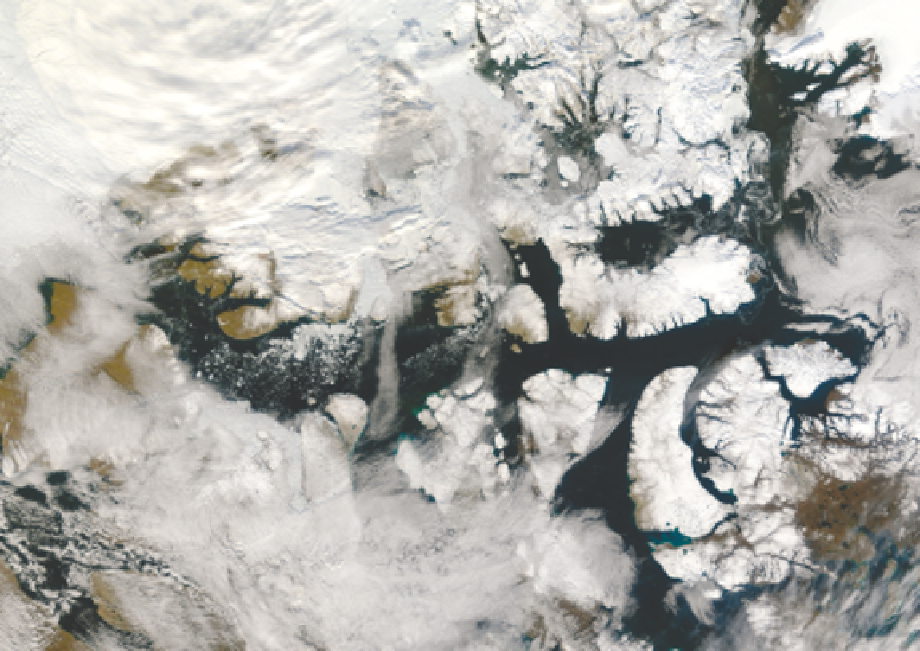Geoscience Reference
In-Depth Information
Plate 13.5
The Northwest Passage in the Canadian Arctic Archipelago largely free of sea ice, 15 September 2007.
Source: http://earthobservatory.nasa.gov/IODT/view.php?id=18964.
Tropical forests are likely to be affected more
by human deforestation than by climate change.
However, decreases in soil moisture are
particularly damaging in hydrologically marginal
areas. In the Amazon, climatic predictions
support the idea of increased convection, and
therefore of rainfall, in its western equatorial
portion, where present rainfall is most abundant.
Because of the particularly large temperature rises
projected for the high northern latitudes, boreal
forests are expected to be strongly affected by their
advance northward into tundra regions. This may
yield further regional warming owing to the lower
albedo of forests during the snow season. Climate
change over the twenty-first century is expected to
have the least effect on temperate forests. The
Arctic, by contrast, is already seeing areas of
tundra being replaced by shrub vegetation. This
trend is expected to continue. A large store of
carbon is locked up in permafrost. A growing
concern is that as permafrost thaws, this carbon
could be released into the atmosphere (either as
CO
2
or CH
4
), representing a strong feedback that
leads to further warming.
Wetlands currently cover 4-6 percent of the
land surface, having been reduced by human
activities by more than half over the past 100
years. Climate change will affect wetlands
mainly by altering their hydrological regimes.
It is believed that eastern China, the United
States and southern Europe will suffer a natural
decline in the area of wetlands during this
century, decreasing the methane flux to the
atmosphere.


